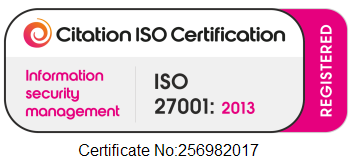Of course, your immediate thought is to focus your time targeting ‘Active’ candidates, those who are proactively on the lookout for a new role, but they only account for 30% of candidates.
This leaves a whole 70% who are only passively looking that could have the potential to be the perfect applicant. These may be happy in their current position but are open to a new opportunity should the right one arrive.
Therefore, targeting only the ‘active candidates’ when recruiting is not always an efficient recruitment strategy. Below are some key points to consider if you want to ensure that you’re targeting both.
Talent Pool
Build up a talent pool of passive candidates. This is a pipeline of talent that can be utilised to fill future posts. Unfortunately, there will be times when the circumstances of the ideal candidate do not match up with your needs to recruit. They could be waiting for a promised promotion which doesn’t come to fruition or need their contract to officially end before making another move. But, even though they may not be ready now, they could be in the future. By putting them into your talent pool it means that you have a communication channel to not only communicate with them but for them to communicate with you, should their circumstances change. This ensures you don’t miss the opportunity when that ideal passive candidate changes to active by nurturing a long-term relationship with them.
Be Visible
Make sure you’re visible where your ideal candidates are, unlike an active candidate, passive candidates won’t come to you unless you’re visible to them. They may not have considered you before, not because working for you wouldn’t but suitable, but possibly because they’re not aware of you or what you have to offer and they are not actively looking to find out. This means a strategised approach is needed to target them where they spend a lot of their time. If they’re not actively looking for a role, they’re probably not looking at those jobs boards that you’re paying fee’s to be placed on. This means being innovative, and some companies are going to lengths to ensure they do just that, like making use of new technology such as AI.
Send the Right Message
There’s not much point targeting them with the wrong message, this needs to be thought out beforehand. What would they value the most from a new opportunity? What can you offer them that other employers may not? Flexibility? Free childcare? A competitive wage? Travel opportunities? And send that message in the most effective way. Could this be a virtual office tour?, Or showcasing how you’re supporting a concern that they care most about by being visible where they share their views on the matter.
Look for Key Indicators
There are key behavioural indicators which would suggest a passive candidate will change into an active one. For example, how long have they been within their current role? Most people change their job every three years. Have they become increasingly active in relevant spaces? For example, LinkedIn. Are they engaging with their connections more, what content are they interacting with, have they started to update their profile? Look at the behaviours and trends in specific industries as well. What key indicators are most relevant to the industry and roles you need to fill. When do open roles in the industry tend to surge? Are you happy to take on newly skilled talent? Target university students who you know will be graduating soon.
Reporting
See what does and doesn’t work in your approach. It’s clearly a lot easier to report on your recruitment if you know that candidates are active and committed to the journey. Although it can be harder to pinpoint the moment of their engagement, there are still ways to evaluate your methods. For example, where is traffic dropping off on your career’s website? Track their journey and see where the drop off rate is increasing. This is a clear indicator that part of the candidate’s journey isn’t successful in getting them to the next stage.
Why?
Although the approach may be a lot harder, having a strategy to target both active and passive candidates will be valuable in securing talent. By opening your strategies to both, you’re increasing your candidate reach. It’s also more likely that passive candidates are those who are highly skilled and experienced that don’t need extensive training. And although it’s not an approach that will suit everyone’s recruitment needs, it’s sure to be one to consider.
Subscribe to our newsletter for more blog posts like this…




Comments are closed